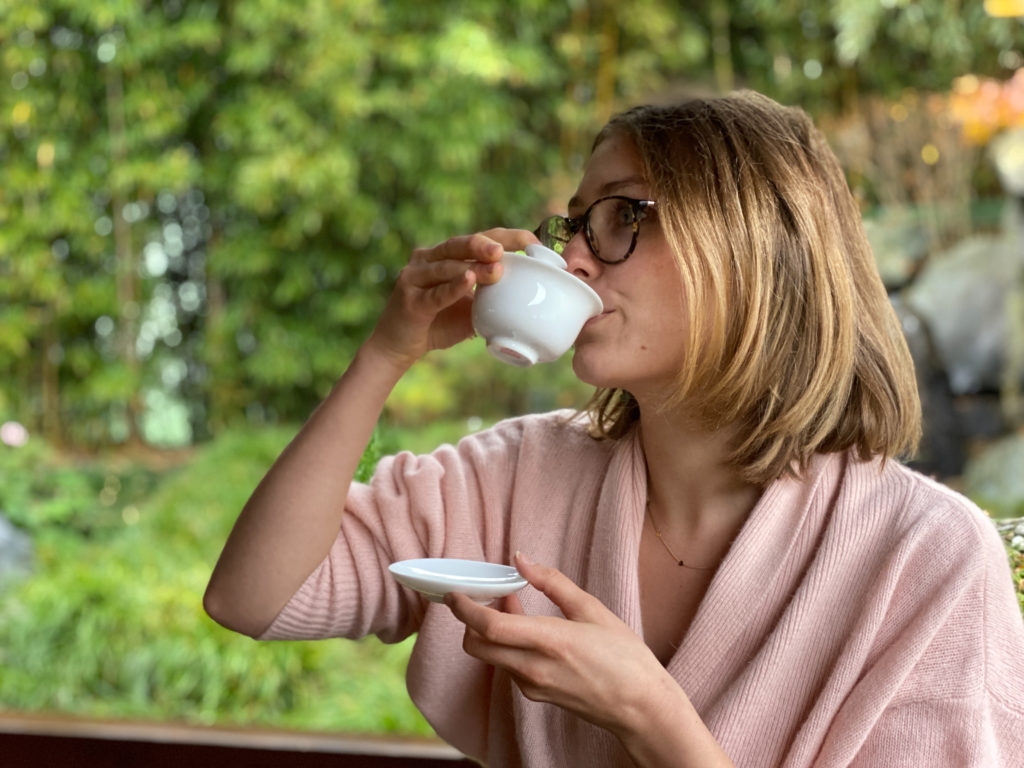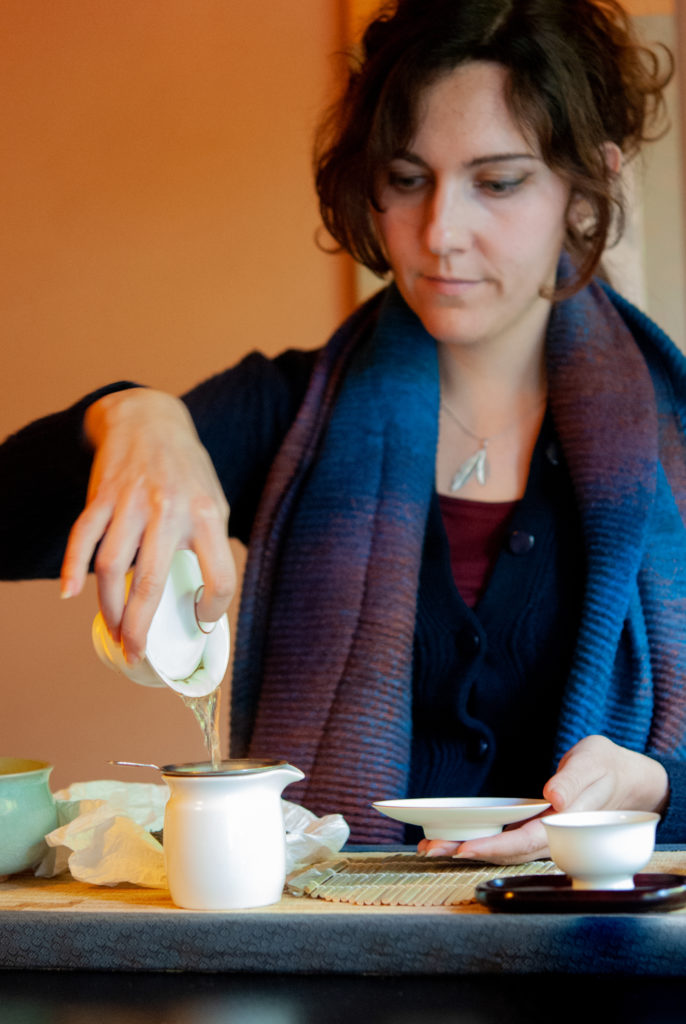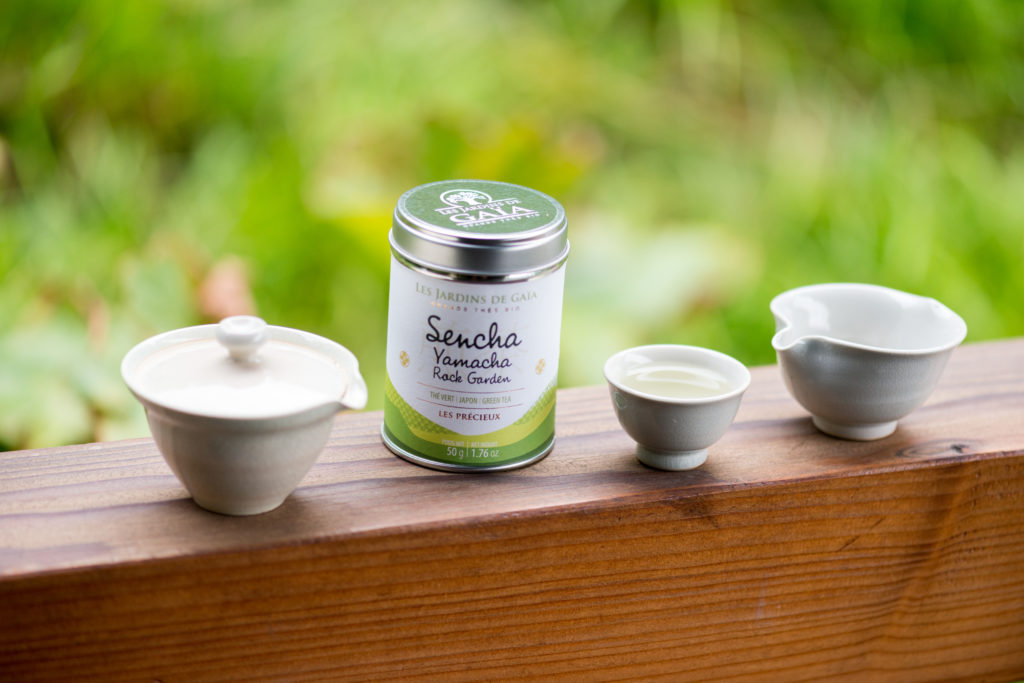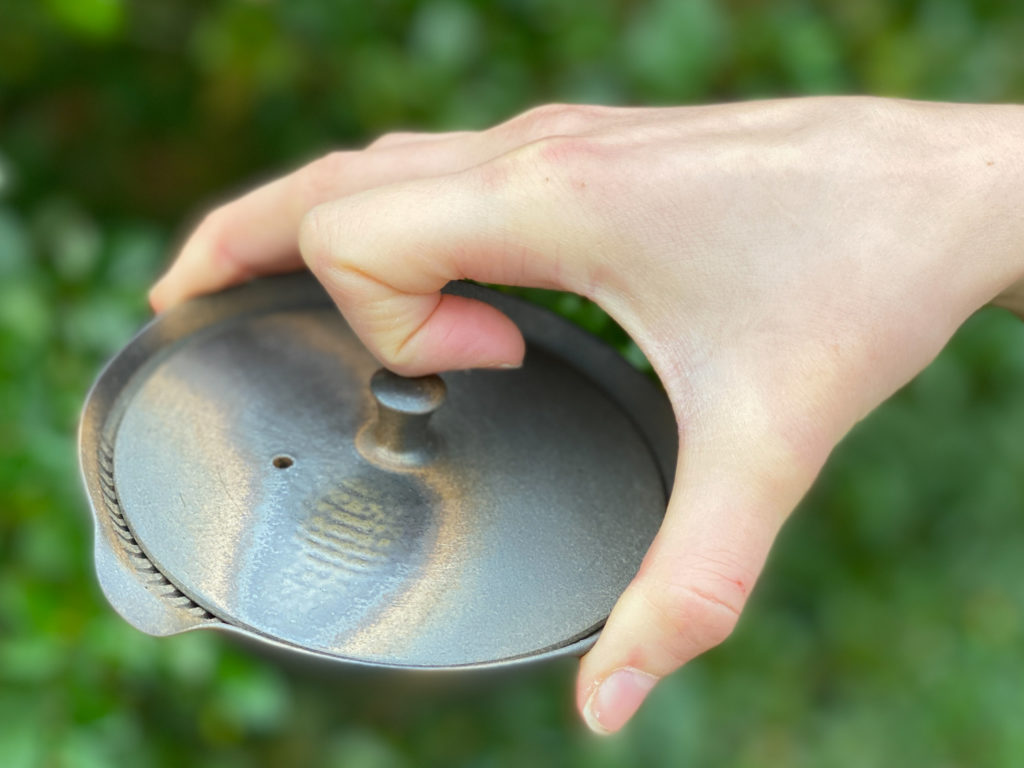Gaiwan or Shiboridashi: the art of infusing without any fuss

Have you ever wanted to enjoy a quick cup of tea, on the run, but felt a bit put off by your your big teapot and strainer?
Well there’s a quick way to prepare tea in a very simple way: use a Chinese gaiwan or a Japanese shiboridashi. These two fabulous and easy-to-use accessories allow you to brew tea in just a few minutes and in small quantities.
The design principle is the same for both: the bare minimum. No handle or filter to clean. Just a bowl with a lid and an extra saucer for the gaiwan.
Perfect simplicity in the art of brewing tea … We love it!
The Gaiwan (or Zhong)

The gaiwan, the vessel favoured by many Chinese tea connoisseurs, is made up of three parts which have a symbolic element to them. The saucer, which prevents the precious wood of the tea table from being stained and also allows you to handle the pot without burning your fingers, represents the earth.
The bowl, with its very thin walls and slightly flared rim for perfect contact with the lips, represents the human being.
Finally, there is the lid which is the most important part of the gaiwan since it is used to retain and inhale the delicate and often interesting fragrances of the infusion and to stir it so that the leaves are well brewed. It can even cool the water if it is a little too steamy. The lid represents the sky.
What are they made of?
As a general rule, tea aficionados prefer a white porcelain gaiwan, with thin walls to avoid burning the tea leaves. The white colour allows you to appreciate the quality and colour of the infusion, but also of the leaves before and after tasting.
Glass can be an alternative to porcelain for infusing delicate teas, but it does not allow the same appreciation of the quality of the leaves as a pure white porcelain. Glass can even mask some flaws.
In addition, you can find terracotta gaiwan on the market in various colours. These can sometimes be useful for teas which need a lot of heat to brew.
For what types of tea?
Green tea
Originally, gaiwans were used for green teas that require real delicacy in their preparation. The thin walls of the porcelain retain little heat and this helps prevent the leaves from stewing. When you scald a green tea with water which is too hot (above 80 ° C), the result is more like a bitter vegetable broth – with no subtlety – than the delicious green tea with sweet, fruity and floral and flavours you’ve been looking forward to.
Using a gaiwan, with the water at the correct temperature and by respecting the infusion time, you will always obtain a precise result and a brew that is full of flavour.
Other types of tea
Nowadays in China it is not unusual to see a gong fu cha enthusiast brewing wu long in a gaiwan and pouring the infusion into small cups. In this case it’s more practical than making the infusion in a small clay Yi Xing teapot for a very high quality result.

It is quite possible to use this type of vessel for all colours and origins of tea, from the most delicate white tea to the most aromatic black tea. However, care must be taken to ensure that the gaiwan is not made of a porous clay that could become impregnated with « parasitic » flavours as it is infused. You should therefore avoid using an unglazed clay pot. But once again a classic gaiwan, in white porcelain, remains the benchmark model that we favour in our shop.
How do you use a gaiwan?
Place the leaves in the bowl and pour in the water. After stirring the infusion, cover with the lid and then leave to infuse. If you are brewing a green tea that doesn’t require a high water temperature, you can drink the tea directly from the bowl by tilting the lid just enough to absorb the infusion, while retaining the tea leaves.
If you have several guests, or if you are brewing a tea requiring a high infusion temperature, the principle is the same, but first you pour the contents of the gaiwan into a serving pot (or reserve pot). The contents of this will then be poured into one or more cups.
Watch out, it’s hot…

However, if you want to infuse a wu long or a black or dark tea requiring water at a high temperature, you must not make the mistake of filling the gaiwan to the brim to avoid burning yourself when you touch the rim, while holding the cover in place with your index finger. It takes a little while to get the knack, but with practice it becomes second nature and is well worth the effort of acquiring, because it really is such an easy way to brew.
Once several infusions have been made and the tasting is complete, simply empty the gaiwan (the tea leaves and their tannins are excellent for the compost) and everything is cleaned away in moments.
Shiboridashi: the Japanese version of the gaiwan
The shiboridashi is a kind of Japanese version of the gaiwan, but its design is even more pared down since it does not have a saucer. Its name comes from the verb « shiboru » which means « to squeeze” or « to crush » in Japanese and, as its name suggests, the idea is to squeeze the tea leaves to extract the maximum flavour from them.

Originally, shiboridashi were used primarily to infuse high-quality gyokuro or sencha. The principle is to use a very small volume of water compared to the quantity of leaves in order to obtain the most concentrated, smooth and aromatic brew possible.
They are generally squat and very flared in shape, but some models can be quite tall. What they have in common is that they always consist of a simple bowl on which the potter has formed a spout, and a lid which rests directly on the interior walls of the bowl and not on a moulded interior rim as is the case with a hohin or a classic teapot.
Like the gaiwan, the lid allows you to capture and smell the subtlest fragrances of tea and stir the infusion to infuse the leaves and control the temperature.
The bowl and lid do not fit properly by design, as the lid must be free to have the necessary clearance to be able to measure the flow when serving the tea.
Some potters also form grooves inside the bowl under the spout which helps hold back the leaves when pouring the infusion.
What are they made of?
Traditional shiboridashi are made from glazed or unglazed terracotta or more rarely from porcelain.
Raw, unglazed terracotta tends to round off the taste of the infusion and make it smoother while a shiboridashi made from porcelain or enamelled earthenware will be completely neutral, presenting the infusion in all its glory with all its qualities there to see, but also all its shortcomings which can in certain cases be highlighted.
A unglazed terracotta shiboridashi is therefore more forgiving, because it is more tolerant, while a porcelain or enamelled shiboridashi forgives nothing, but opens the way to interesting tastings.
For what types of tea?

Nowadays, as with the gaiwan, tea lovers no longer use the shiboridashi solely for infusing green teas. In fact you can infuse any colour of tea – the only limitation is the memory effect of unglazed clays. However, there is a « but », because most of the shiboridashi we sell come from Tokoname (Aichi Prefecture). The clays from this mecca of Japanese pottery have a reputation for having a fine grain and the potters of this region generally fire them at high temperatures, which makes these terracotta pots hardly porous at all and with virtually no memory effect.
For pots from other places, it varies from case to case.
On the other hand, with porcelain shiboridashi and enamelled terracotta the question doesn’t arise. You can go from green tea to black tea to wu long without any problems.
As with the gaiwan, infusing teas other than green teas in a shiboridashi is a slightly roundabout way of using this infuser, but its practicality and ease of cleaning justify its daily use.
The only thing you need to be careful of is to avoid filling the shiboridashi to the brim when brewing teas which require very hot water so you can hold them at the top without burning yourself.
As you will have gathered, when you want to quickly brew a high-quality infusion, whether it is a classic tea or a grand cru, these two extremely attractive accessories are indispensable. And the icing on the cake is that their simplicity allows the ceramicists’ skill to shine through … Why not have a look in our shop to discover some fine examples…
Écrit par Les Jardins de Gaïa
Pionniers sur le marché des thés et tisanes bio et équitables, Les Jardins de Gaïa proposent, depuis 1994, des grands crus nature, des classiques et des créations maison originales. Privilégiant les petits producteurs et les récoltes manuelles, ils ont développé au fil des années une gamme généreuse et variée de thés, rooibos et tisanes aux qualités gustatives reconnues, ainsi qu’une gamme d’épices bio et prémiums proposée sous la marque Terra Madre. Tel un jardin épanoui, la force des Jardins de Gaïa tient dans la diversité des terroirs et l’engagement des hommes qui la travaillent…
